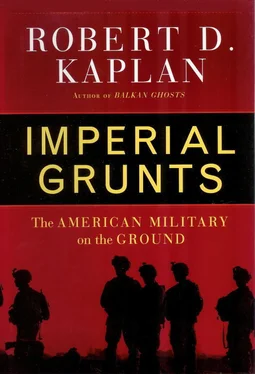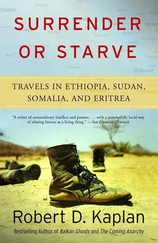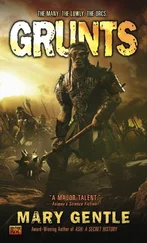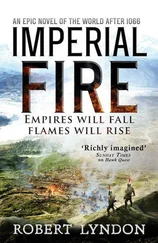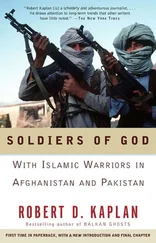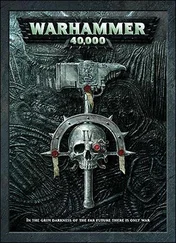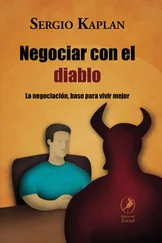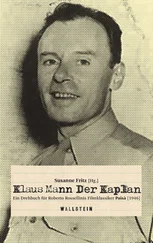SF:Special Forces. Highly trained branch of the U.S. Army that specializes in unconventional warfare. Popularly called Green Berets, though they don’t often refer to themselves as such.
shalwar kameez: pajama-like trousers (shalwar) gathered at the waist and ankles, and worn underneath a long loose tunic (kameez) by Pushtun men and women.
Sim Sit:simulated situation.
SLLS:Smell. Look. Listen. Silence.
SOCOM:Special Operations Command.
SOCPAC:Special Operations Command, Pacific.
SOF:Special Operations Forces.
SOP:standard operating procedure.
SOUTHCOM:Southern Command.
SPETSNAZ:Russian special forces.
SSE:sensitive site exploration. A slow and deliberate site search.
terp:interpreter.
TOC:tactical operations center. Command post where general and special staff direct support operations.
trishaw:in Asia, a light vehicle with three wheels that is pedaled to transport passengers or goods.
TUFF bin:a polyurethane-insulated container used to transport and hold personal items.
UHF:ultra-high (radio) frequency.
UH-ID Huey:U.S. Army attack and transport helicopter used extensively during the Vietnam War.
UH-IN Huey:U.S. Army and Marine gunship helicopter.
UH-69 Black Hawk:the primary U.S. Army front-line utility helicopter, used for air assault, troop and cargo transport, electronic warfare, and medical evacuation. Successor to the UH-1 Huey.
USAID:United States Agency for International Development.
UW:unconventional warfare.
wadi:in arid regions of Southwest Asia and North Africa, a streambed that is dry except during the rainy season.
Zodiac:inflatable boat.
Zulu time:military time, numbered in hours to twenty-four and expressed in four digits—for example, 2300 is 11 p.m. Equivalent to Greenwich mean time.
ROBERT D. KAPLAN is a correspondent for The Atlantic Monthly and the author of ten previous books on foreign affairs and travel, which have been translated into many languages; these books include Balkan Ghosts, Eastward to Tartary, Warrior Politics, The Coming Anarchy, and The Ends of the Earth. He lives in western Massachusetts.
Mediterranean Winter: The Pleasures of History and Landscape in Tunisia, Sicily, Dalmatia, and the Peloponnese
Warrior Politics: Why Leadership Demands a Pagan Ethos
Eastward to Tartary: Travels in the Balkans, the Middle East, and the Caucasus
The Coming Anarchy: Shattering the Dreams of the Post Cold War
An Empire Wilderness: Travels into America’s Future
The Ends of the Earth: From Togo to Turkmenistan, from Iran to Cambodia
The Arabists: The Romance of an American Elite
Balkan Ghosts: A Journey Through History
Soldiers of God: With Islamic Warriors in Afghanistan and Pakistan
Surrender or Starve: Travels in Ethiopia, Sudan, Somalia, and Eritrea

Copyright © 2005 by Robert D. Kaplan
All rights reserved.
Published in the United States by Random House, an imprint of The Random House Publishing Group, a division of Random House, Inc., New York.
RANDOM HOUSE and colophon are registered trademarks of Random House, Inc.
All other maps courtesy of Maps.com: www.maps.com
LIBRARY OF CONGRESS CATALOGING-IN-PUBLICATION DATA
Kaplan, Robert D.
Imperial grunts : the American military on the ground / Robert D. Kaplan.
p. cm.
1. Soldiers—United States—History—21st century. 2. Special forces (Military science)—United States. 3. War on Terrorism, 2001– 4. United States—Military policy. 5. World politics—1995–2005. 6. Imperialism. I. Title.
U52.K37 2005
973.931—dc22 2004061466
www.atrandom.com
V1.0
eISBN: 978-0-307-27850-0
v3.0
The Department of Utah included parts of present-day Colorado and Nevada; the Department of California included Arizona; Oregon included Washington and Idaho; and the West most of the central and northern Great Plains.
The term “quiet professionals” was coined by Army Special Forces commander Maj. Gen. Leroy Suddath in the 1980s.
For a nostalgic firsthand account of Indian operations on the Great Plains between the Mexican and Civil wars, see Percival G. Lowe’s Five Years a Dragoon ( ’49 to ’54 ) (1906; reprint, Norman: University of Oklahoma Press, 1965).
“The White Man’s Burden” was a poem written by Kipling to urge the United States to intervene in the Philippines in 1899. It is essentially an idealistic poem, though it has often been quoted out of context.
See N. Scott Momaday’s terse description of the warrior ideal, in Edward S. Curtis and the North American Indian (New York: Simon & Schuster, 2000), p. 10. Momaday was referring not to Remington’s work, but to that of the photographer Curtis. It is a small but interesting fact that members of the 101st Airborne Division, in preparation for their parachute drop on D-Day, shaved themselves in Mohawk style and applied war paint on their faces (Airborne Special Operations Museum, Fayetteville, North Carolina).
British historian Niall Ferguson, in a reference to the American position in the world at the dawn of the twenty-first century, puts it another way: “The technology of overseas rule may have changed—the Dreadnoughts may have given way to F-15s. But like it or not, and deny it who will, empire is as much a reality today as it was throughout the three hundred years when Britain ruled, and made, the modern world.” Niall Ferguson, Empire: The Rise and Demise of the British World Order and the Lessons for Global Power (New York: Basic Books, 2003), p. 370.
World Bank estimates.
For a blow-by-blow account of United Nations military incompetence in Sierra Leone see Damien Lewis’s Operation Certain Death (London: Century, 2004).
Women did not serve in the Special Operations community.
See Richard H. Shultz Jr.’s The Secret War Against Hanoi: The Untold Story of Spies, Saboteurs, and Covert Warriors in North Vietnam (New York: HarperCollins, 1999) (footnote 6) for a lucid analysis of the problems of unconventional war in Vietnam, and of Kennedy’s attraction to it.
Mexico is covered by Northern Command.
SOUTHCOM provided a fifteen-man Special Forces Mobile Training Team to train a Bolivian Ranger battalion, which killed Guevara. Guevara had hoped that the U.S. would respond with a massive gringo intervention; in fact, Washington’s response was measured. Guevara’s company made the additional mistake of trying to recruit native Bolivian Indians whose Quechua and Aymara languages they didn’t speak. See John D. Waghelstein, “Ruminations of a Pachyderm or What I Learned in the Counter-insurgency Business,” Small Wars and Insurgencies (London: Cass, Winter 1994), p. 362.
Читать дальше
